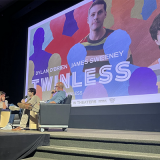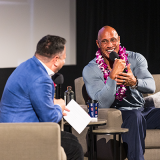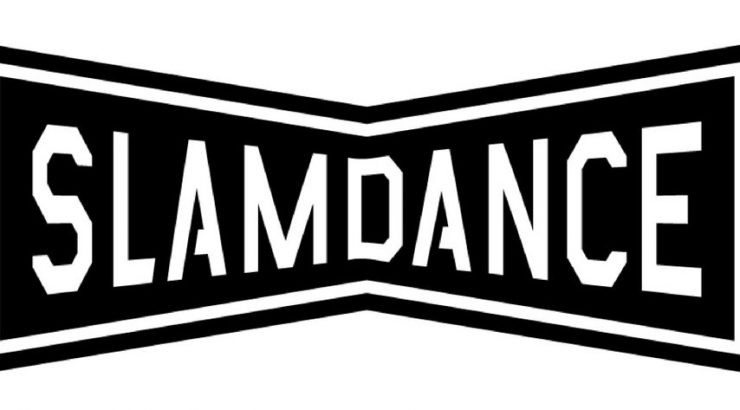
What are Festival Programmers Actually Looking for? An Inside Look at Slamdance.
November 8, 2018
I know the festival submission process can seem pretty mysterious. Which is why in this blog post (and future posts) I hope to shed some light on what festival programmers are looking for. This post will take an in depth look specifically at what Slamdance is looking for.
Slamdance wants to make the submission process as transparent as possible, because as their motto proclaims, they are filmmakers here to help fellow filmmakers. Most of the programmers are alumni of the festival who have been in your shoes—confused and nervous about navigating the festival circuit with their first films. Somehow, through some combination of grit and magic, they are now on the other side as Slamdance programmers! They want to help, and here is what they have to say:
How programming works at Slamdance:
- We’re all filmmakers and we’re all volunteers. Almost all of us have screened films at Slamdance.
- Every film submitted is watched in its entirety by at least two different programmers.
- We have around 150 programmers from throughout the US and around the world. They are watching your online screeners at their convenience from wherever they are in the world.
- Every programmer has an equal voice. We don’t have lower tier screeners acting as gatekeepers.
- 100% of films selected come from our submissions pool. We don’t make promises to friends or celebrities. They have to submit just like everybody else.
- After every film is watched and scored at least twice, our programming teams meet in person. We spend a few weekends in late October and November rewatching and discussing high scoring films and duking it out, until our Festival Program finally emerges from the rubble of our battles.
- For Slamdance 2018, we received over 6100 submissions and programmed 95 films.
- Before they were household names but after they screened their first films at Slamdance, the Russo Brothers, Emma Thomas, Rian Johnson and Ana Lily Amirpour all participated in Slamdance programming —and that’s just a few examples from our 25 years of the festival. So you never really know who’s going to be watching your film!
Here are some tips and insights from members of our programming team about what we love to see, how we program, and everything else in between. Read on to get a peek inside the minds behind the 2019 Slamdance Film Festival.
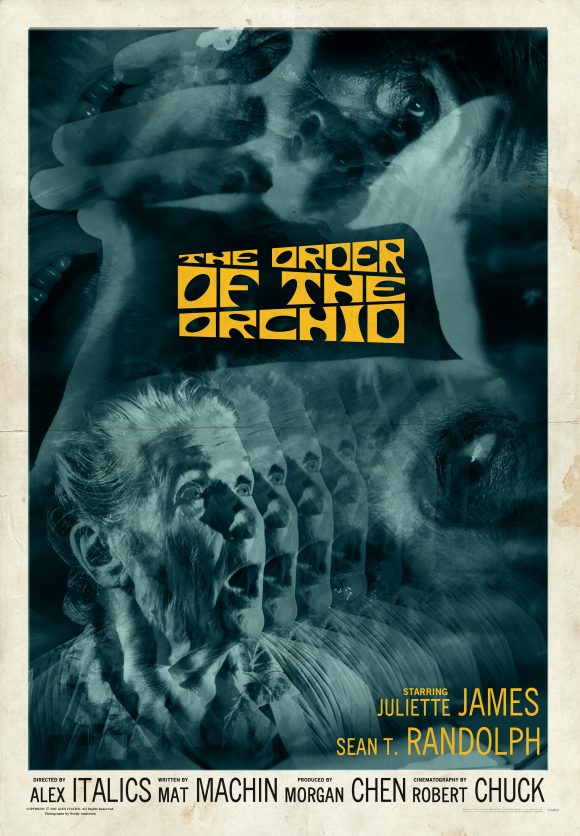
THE ORDER OF THE ORCHID directed by Alex Italics (MFA/FP ’18) had it’s World Premier at Slamdance in 2018.
On standing out:
“In order for your film to get programmed, at least one person on the programming team has to LOVE it. It has to be their favorite — so that they’ll fight for it and rally support for it. The converse is also true — if your film is really good but nobody loves it, the chances that it will get programmed diminish. If I can get the film I love programmed, it’s likely that I will understand and support another programmer’s favorite film even if I don’t necessarily respond to it, because I will respond to their passion.”
“Being genuinely surprised by a short is becoming one of the qualities I’m most excited — and often convinced by. I don’t mean clever twist endings, but an overall feeling of unexpectedness in short-storytelling.”
On knowing your festival:
“I think the most important thing to note is to know the festival you’re submitting to and their requirements before blindly submitting.”
“Check out some of our past years programs! They are usually out of the box and one of a kind with their story and filmmaking.”
On the sweetness of shortness:
“I think the most common issue I’ve encountered is filmmakers taking an interesting idea and stretching it out too long”
“The real question here is, “Do you think your film could be shorter? Should be shorter?” If you do, then please make it shorter. We all watch hundreds of hours of film. There’s nothing wrong with setting a mood or hitting an emotional beat, but sometimes filmmakers end up with a runtime that is right on the cusp between a short and a feature (say, 35 or 60 minutes long), and these can be difficult to program just from a logistical point of view. We will program things that are these lengths, but the films in question better be damn good. If you’re on the fence about whether to shorten things up or puff them out, aim to shorten them up. Get some outside perspective. Consider telling your story in a different way. Get in touch with the essence of what you’re trying to say and make sure everything you put on screen can be tied directly back to that essence. If the film is tight, doesn’t waste any time, and stays true to itself, then any length will work. When I programmed short films, I thought 12 minutes was the ideal length, but two of my favorite programmed shorts were 30 minutes long.”
On quality of artistry vs. quality of technology
“In this day and age, the technical elements have to be strong—it doesn’t cost that much money to make your film look and sound really good anymore (it takes talent). For me, the acting must be really strong. Too many films, even those with little to no resources will be very well executed. If yours isn’t it, will struggle in comparison. This doesn’t mean they have to be known or famous actors — they just have to be very believable performances that don’t pull me out of the story. As a filmmaker going into film festival submissions, be aware that we are seeing 100’s if not 1000’s of films. So in order to stand out you’ve got to turn all the realities of your filmmaking circumstance, even if its a lack of resources, into a positive for your film. I want to see a better film because of your circumstances not an inferior film. If you don’t achieve that someone else will.”
“Films with handsome cinematography, professional-level acting, and other ‘calling card’ attributes are extremely common. All of these things can be great, but they are nothing without unique development of a strong concept. And it’s far easier to forgive poor cinematography than a poor concept.”
Don’t mind us, make what compels you.
“I am inspired by your films every day. What I appreciate most about programming is getting a chance to hear you, see you, and better understand you through your creative projects. What I hope to impress upon anyone creating work that they plan to submit to a festival is, be authentic. Don’t try to make a film you think someone will like. Don’t try and improve upon someone else’s vision. Don’t choose a subject because it’s popular. Rather, I encourage you to make the film that only you can make. Be empowered to be as authentic to your vision as possible. Trust yourself. I assure you, you will find your audience. And I know I can’t wait to see your submission.”
“Don’t chase after what you think programmers might like, because at the end of the day, out of thousands of shorts, there will literally only be a handful that ALL the programmers agree on. The rest are varying degrees of “yes’s” and “no’s” so you’re just dealing with (what sage programmer Randall calls) “a bunch of asshole programmers with opinions.” No single programmer has the answers, but as a collective we become Slamdance.”
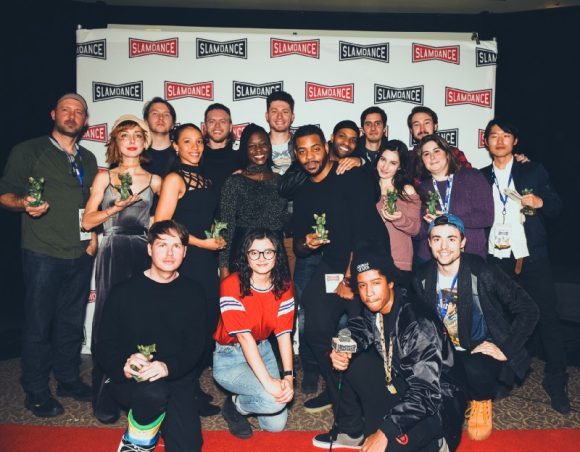
On the features side of the program ROCK STEAD ROW directed by Trevor Stevens (BFA/FP ’15) and produced by Gia Rigoli (BFA ’17), Madeleine Krikava (BFA ’16), and Jade Allen (BFA ’16) won the Grand Jury Prize and Audience Award for Best Narrative Feature at Slamdance in 2018.
Some Practical Tips for Sanity’s Sake (Yours, and Ours)
- We don’t really care about Cover Letters, tbh. Lots of other festivals do, but we don’t. We’ll take them, and we might even enjoy reading about where you are coming from as a filmmaker, but our programmers are really judging only what they see on screen.
- Read the freaking category rules and submit to the right category. We won’t disqualify you if you are wrong, but we are busy folks.
- Have test screenings with your friends or strangers who will tell you what they truly think. Do it early so that you have time to reflect and make changes. Take notes, and make sure to be confident in all the changes you make.
- We accept works in progress…but do understand that many of the films submitted will be completed works or at least, picture-locked. Edit your film down until all the fat is gone. How you edit is more important than things like color-correction and sound mix.
- If you are submitting a work-in-progress, put a title card at the start of your screener that denotes what you are still working on. Then, programmers will know that, for example, the distracting scratching sound is not an artistic choice but just needs to be, and will be, cleaned up.
- We can’t update your screeners if you have a more updated version. Beyond the fact that it’s a little unfair to filmmakers who submit later and pay a higher fee, we just don’t have the bandwidth to change out screeners whenever filmmakers make a change to their film. (But there’s a VIMEO LOOPHOLE. If you submit a Vimeo link as your screener, you can change out the video uploaded to that link whenever you want. And there’s nothing we can do about it.)
- Submit early if you can!!! When you submit to Slamdance, whether it was the moment submissions opened or at 11:57PM on the absolute last day, your film will be watched by 2+ programmers. That’s a promise. But in the last 2 weeks of our 4-month long submissions period, we receive about 25–35% of our submissions. (Last year we received 1500 films in the last 10 days!) And then we have 3 weeks to watch them all twice! So if you submit early, you will more likely get programmers relaxing on their couch, drinking a cold beer and unwinding to your film after a day of work. If you submit late, you might get a programmer who has already watched 15 feature films that day, cramming to watch everything before our final deliberations meetings. Submitting early also gives programmers more time to reflect and absorb your film, and they may even change their scores after comparing it to others they watch (for better or worse).
- “When in doubt — submit! You never know what the programmers will like or what might really resonate with someone. We make art so we can share, so please do share!”
See more quotes from Slamdance’s programmers in the full article, and stay tuned for next month’s programmer post as we take a look at SXSW.
